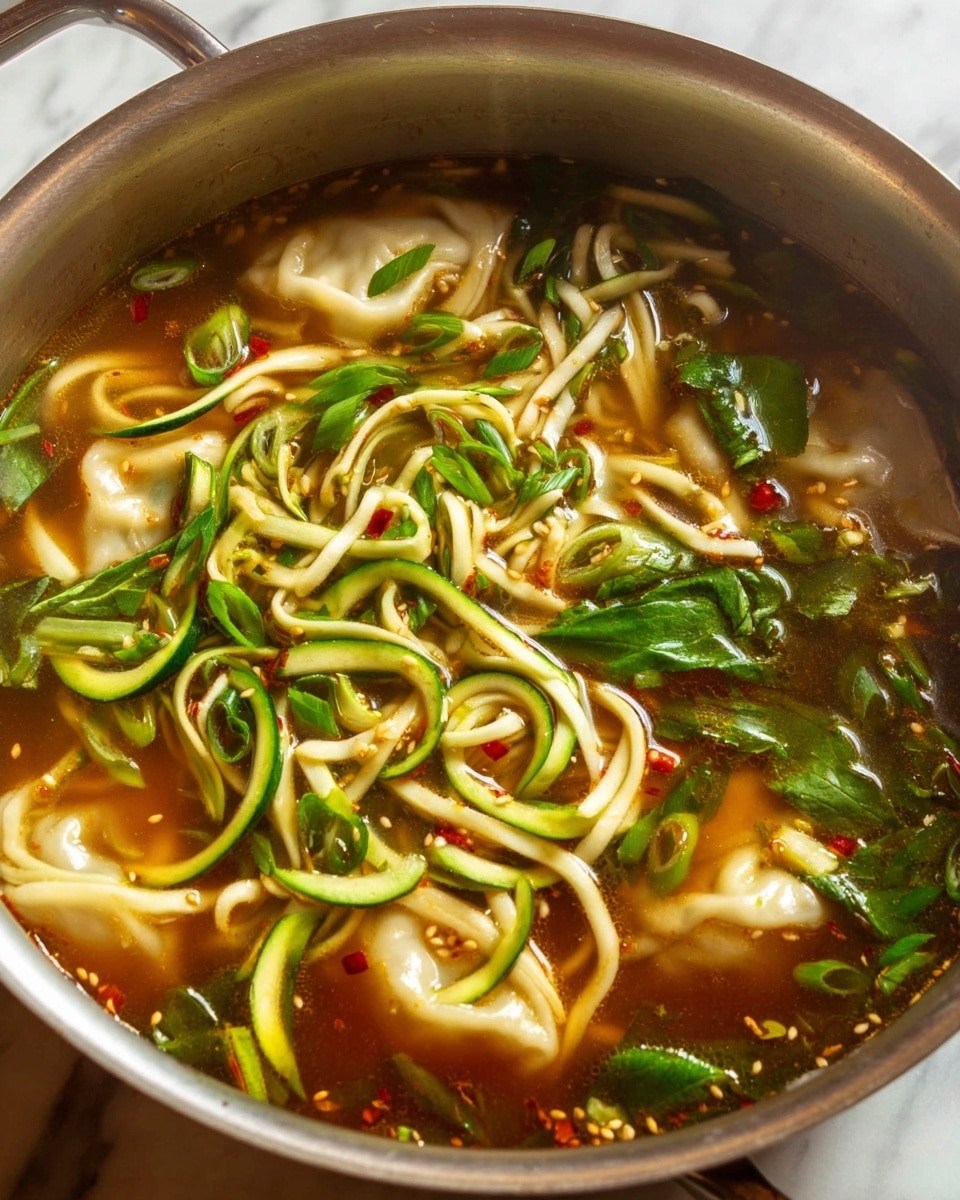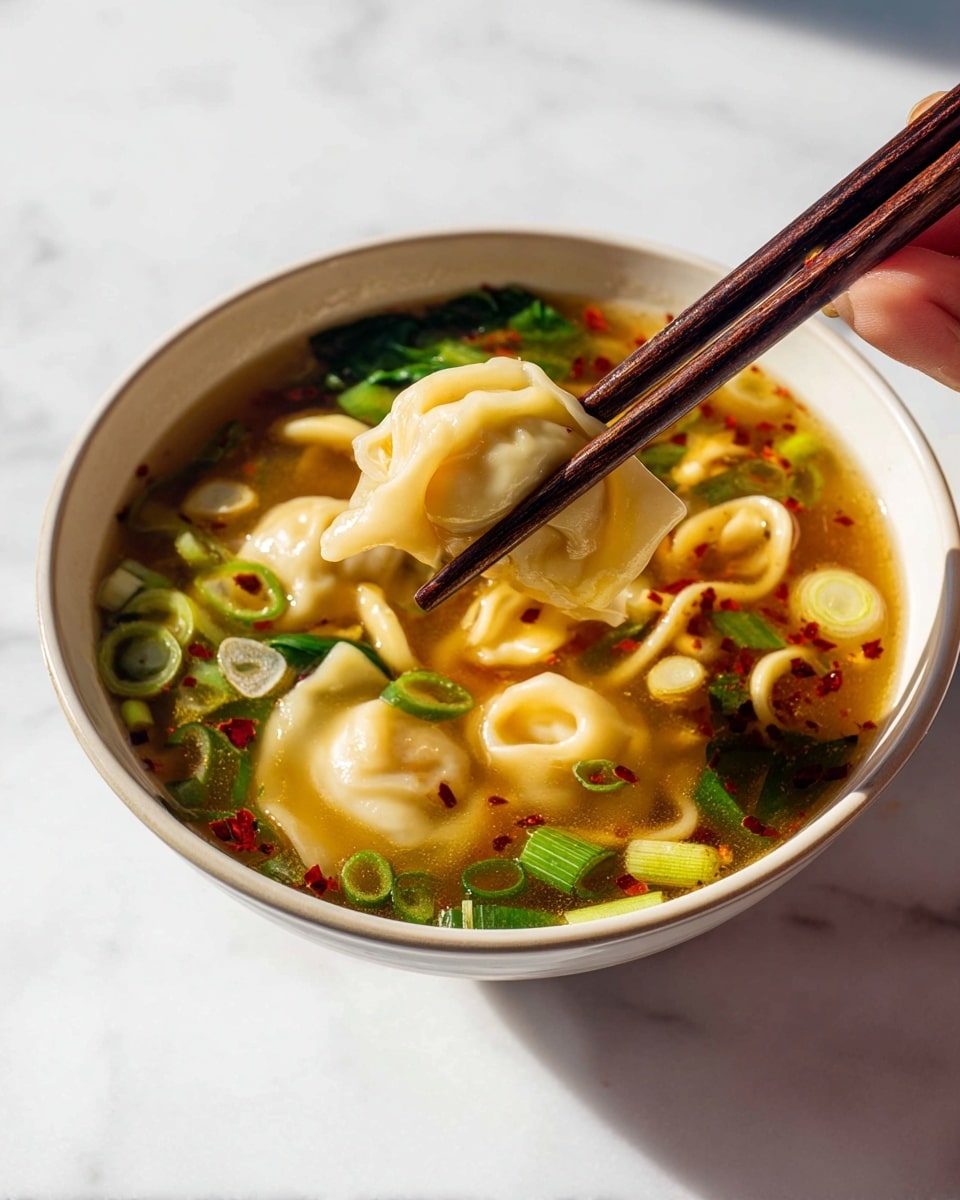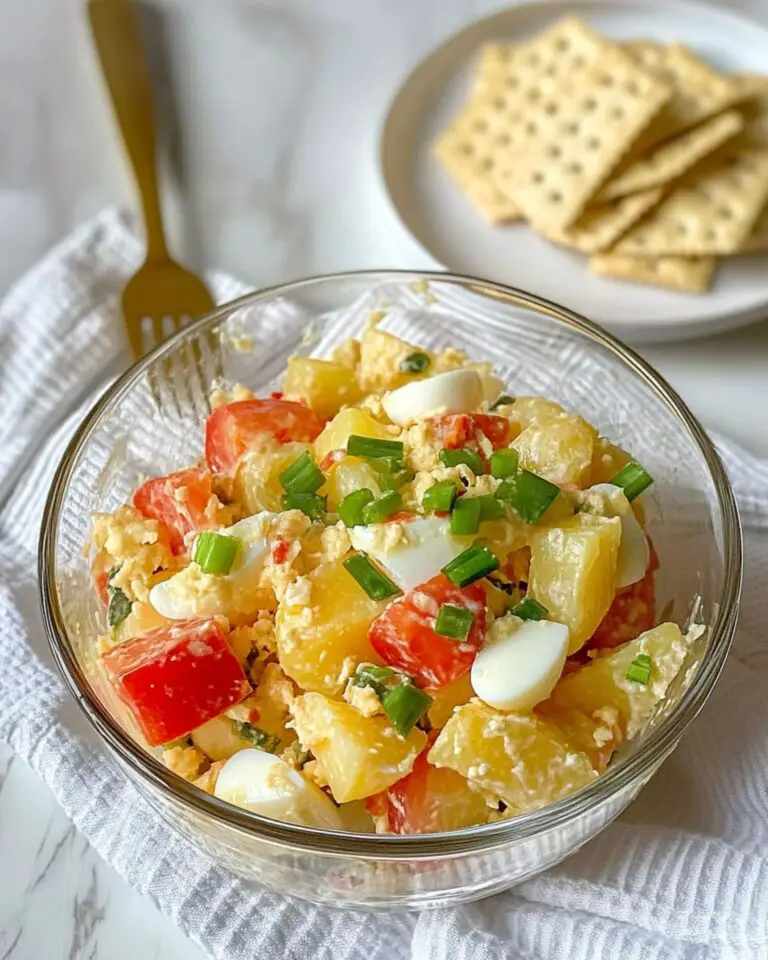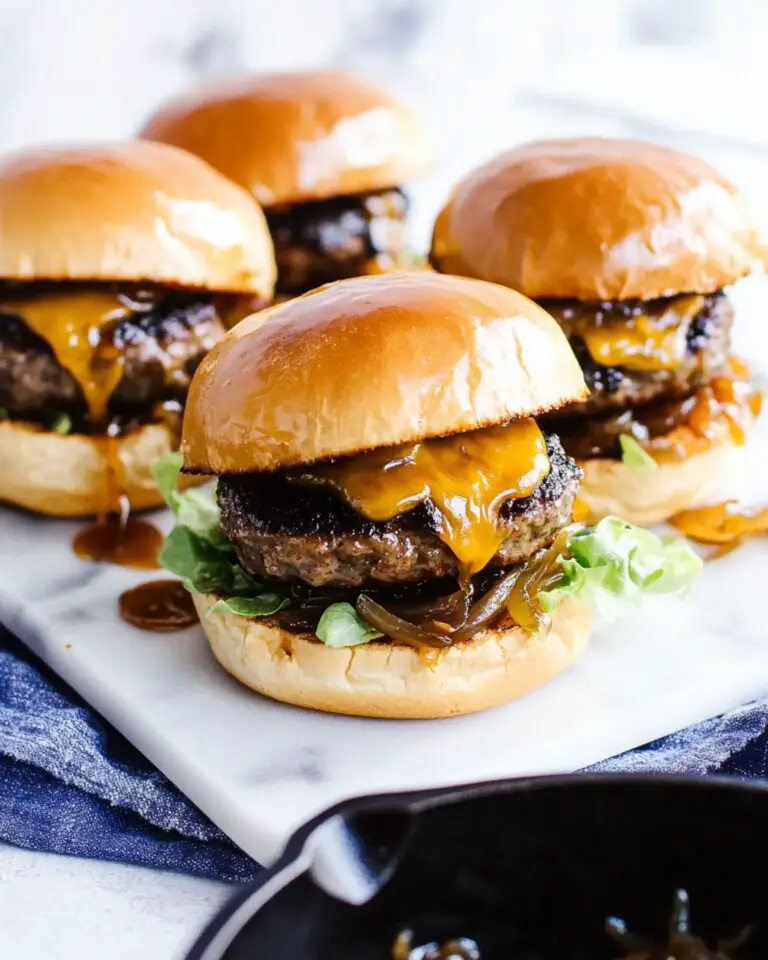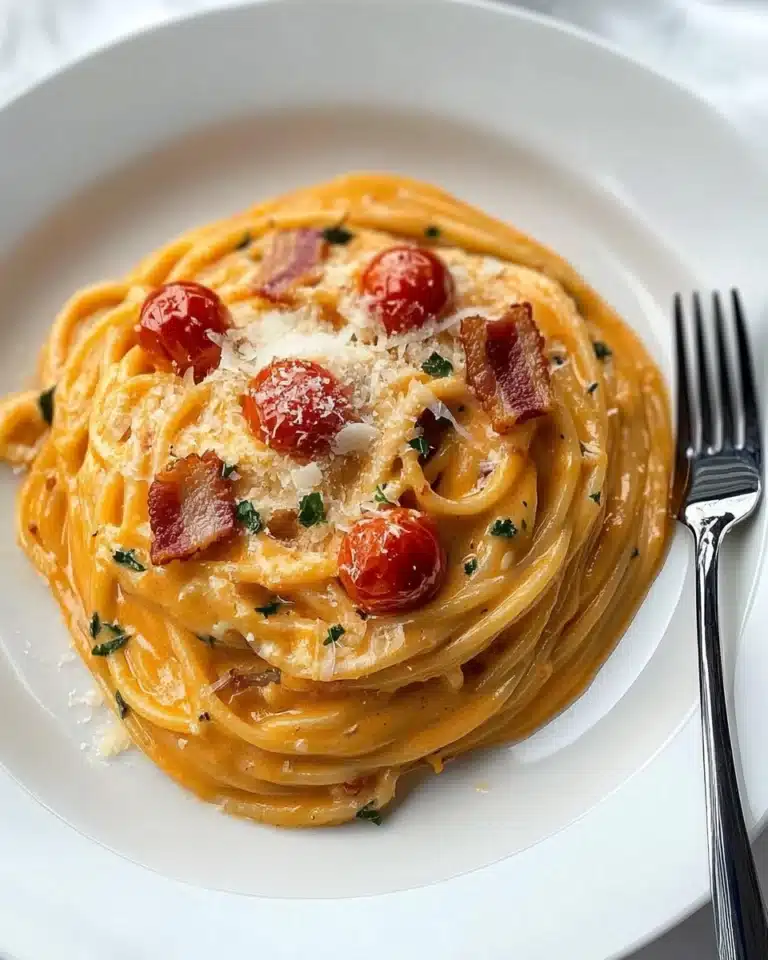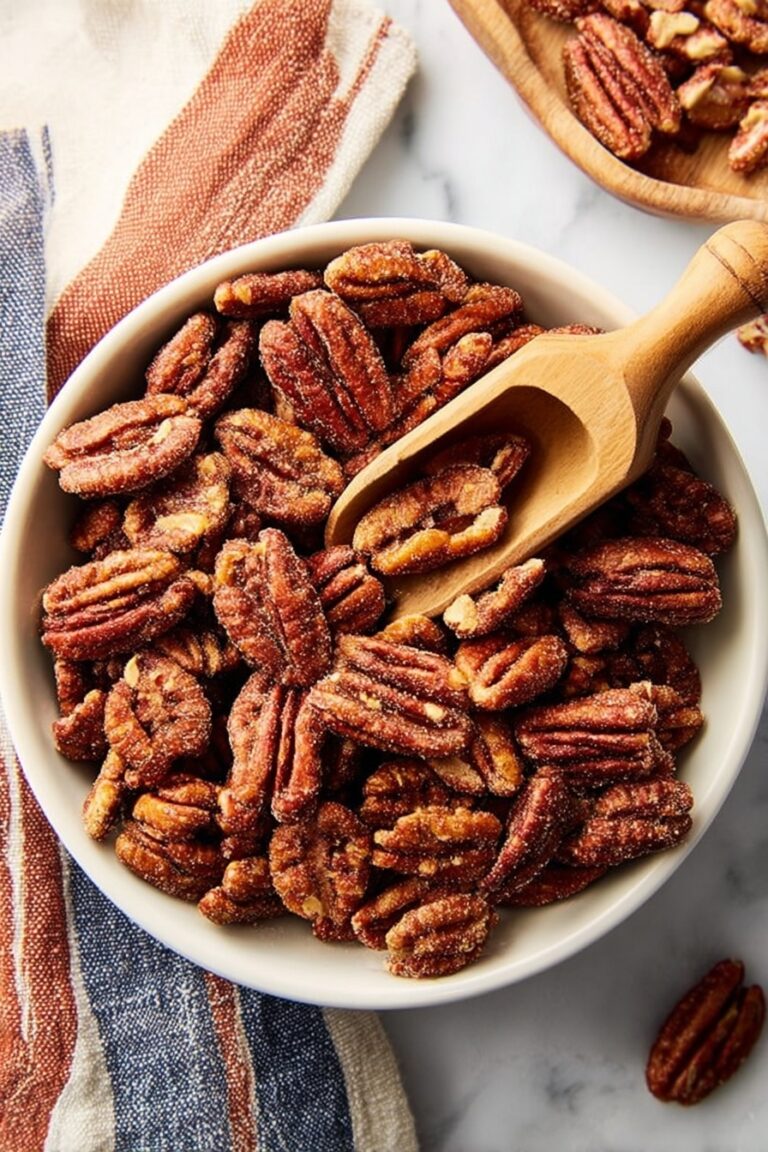If you’re craving something warm, comforting, and surprisingly quick, I’ve got a recipe you’ll want in your dinner rotation stat. This Gyoza Soup (Japanese Dumpling Soup) Recipe is a beautiful blend of flavors, textures, and colors that come together in under 10 minutes. I absolutely love this because it feels like a fancy restaurant dish but takes almost no time and minimal effort. Once you try it, you’ll see why it’s become a favorite in my house!
Why You’ll Love This Recipe
- Super Quick and Easy: You can have a steaming bowl ready in 10 minutes — perfect for any busy night.
- Flavorful Broth: The ginger, garlic, and soy sauce create a savory base that’s cozy and fragrant.
- Versatile Ingredients: It’s easy to swap in your favorite veggies or gyoza kinds to keep it fresh.
- Family Friendly: My family goes crazy for this soup — a guaranteed winner everyone loves.
Ingredients You’ll Need
Getting the balance right with fresh vegetables and those tasty gyozas is what makes this soup so satisfying. I always recommend grabbing fresh spring onions and a good quality veggie stock to make your broth pop with flavor.
- Vegetable gyozas: Pre-made veggie gyozas save you loads of time but still pack great flavor—look for ones that aren’t too oily.
- Spring onions: I like using the whiter parts for cooking and reserving the greens for garnish—they add a fresh crunch.
- Pak choi: Adds a nice leafy texture and mild sweetness that balances the savory broth.
- Fresh ginger: Finely grated gives an aromatic zing that wakes up the soup.
- Garlic: Minced and sautéed gently to bring warmth without bitterness.
- Courgette: Spiralising it makes for a lovely noodle-like texture without extra carbs.
- Vegetable stock: A good quality stock elevates the broth—homemade or store-bought works well.
- Soy sauce: Adds depth and umami to the soup.
- Chilli oil: Gives a subtle spicy kick—I always recommend adjusting this to taste.
- Salt & pepper: To season perfectly at the end.
Variations
I love how flexible this Gyoza Soup (Japanese Dumpling Soup) Recipe is — you can easily tweak it based on what you have in the fridge or how spicy you want it. Don’t be shy about making it your own!
- Protein Add-In: Sometimes I toss in some shredded chicken or tofu cubes for extra protein—it makes the soup more filling without changing the flavors too much.
- Veggie Swaps: Tried kale instead of pak choi once, and it worked great; feel free to swap in mushrooms, spinach, or snap peas.
- Mild & Spicy: If you prefer it mild, skip the chilli oil or add less; for heat lovers, double it or add a pinch of red pepper flakes.
- Broth Variations: For an even richer taste, you can finish the soup with a dash of toasted sesame oil or a splash of miso paste.
How to Make Gyoza Soup (Japanese Dumpling Soup) Recipe
Step 1: Infuse Your Base With Flavor
Start by heating a tablespoon of chili oil over low heat in a medium-sized saucepan. I’ve found that keeping the heat low here is key — it allows the oil to gently absorb the flavors of the spring onion without burning. Toss in half of the spring onions (the white parts) and season lightly with salt. Let them fry for a couple of minutes until they soften and smell amazing.
Step 2: Build the Aromatic Layer
Next, add the minced garlic and grated ginger. Fry these together for about one minute until fragrant but not browned—this step really brings out the vibrant zesty notes in the soup. If your kitchen starts smelling like an Asian street market, you’re on the right track!
Step 3: Add Main Ingredients and Simmer
Throw in all the rest now: vegetable gyozas, pak choi, spiralised courgette, vegetable stock, and soy sauce. Stir everything gently to combine, making sure the soy sauce is evenly distributed. Put a lid on your pot and let it simmer for about 7 minutes. During this time, the gyozas cook through perfectly, and the pak choi softens while still holding onto its bite. Don’t skip the lid here — it traps steam that cooks everything evenly.
Step 4: Finish and Serve
When your soup is ready, ladle it into bowls and sprinkle over the remaining spring onions and a pinch of chilli flakes if you fancy extra heat. The greens add a lovely freshness and a little crunch—you’ll notice it right away, trust me!
Pro Tips for Making Gyoza Soup (Japanese Dumpling Soup) Recipe
- Gentle Heat: Keeping the heat low when frying onions, garlic, and ginger avoids bitterness and brings out their natural sweetness.
- Don’t Rush Simmering: Simmering with the lid on lets the dumplings cook gently and veggies soften without drying the broth.
- Fresh Garnishes Matter: Adding fresh spring onions and chili flakes at the end brightens flavors and adds texture contrast.
- Avoid Overcrowding: If your pot is small, cook dumplings in batches to keep them from sticking together or getting soggy.
How to Serve Gyoza Soup (Japanese Dumpling Soup) Recipe
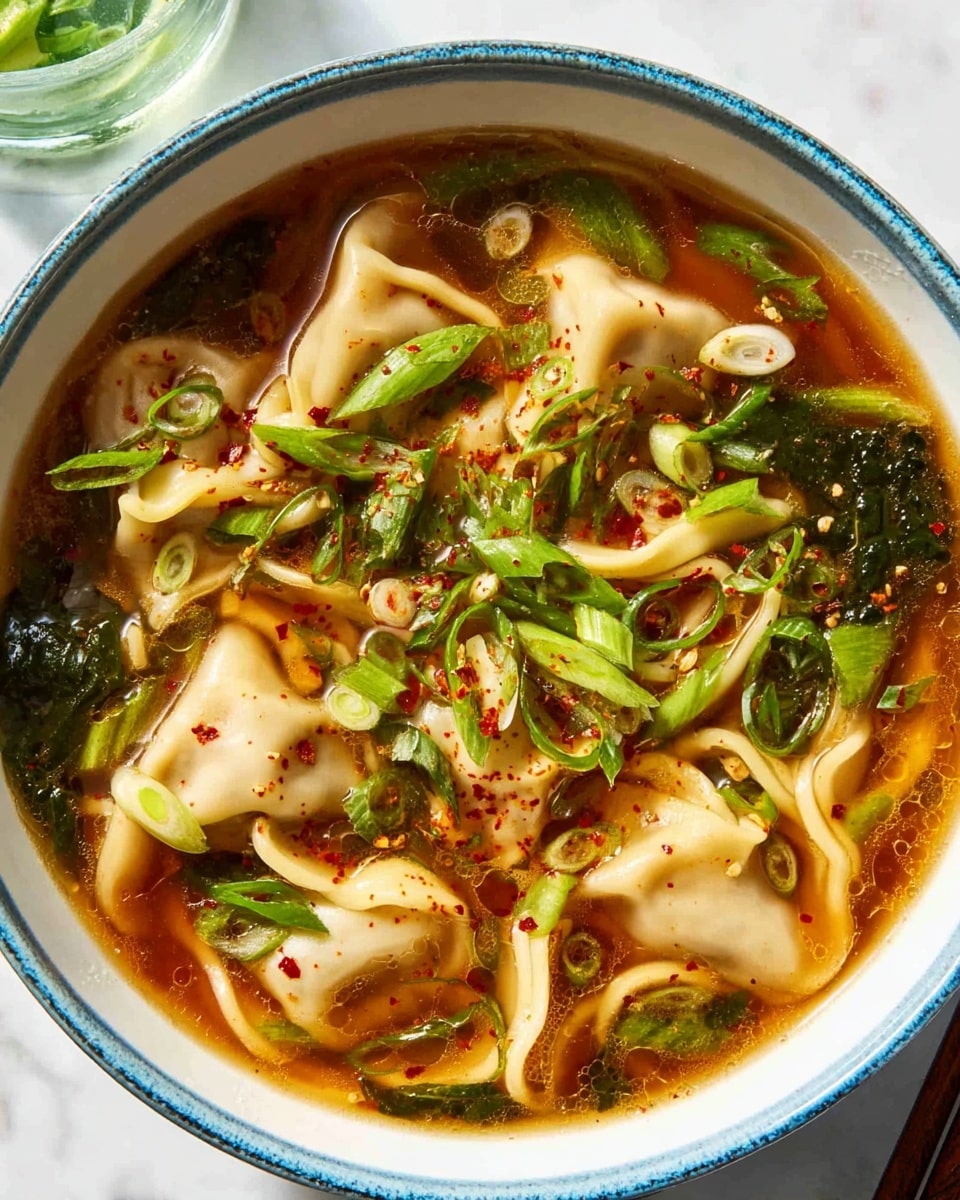
Garnishes
I always finish my gyoza soup with a sprinkle of crisp spring onion greens and a few flakes of chili for heat and color. Sometimes I add a drizzle of extra chili oil or a few toasted sesame seeds for a tiny nutty crunch. These little touches make a simple soup feel extra special and vibrant.
Side Dishes
To round out the meal, I love pairing this soup with a simple bowl of steamed jasmine rice or some pickled vegetables for acidity and crunch. A light cucumber salad or edamame beans also complement the flavors well without overwhelming the delicate broth.
Creative Ways to Present
For game day or a dinner party, try serving the soup in small, clear glass bowls to show off the colorful veggies and dumplings. Garnish with thinly sliced red chili or microgreens for a gourmet touch. You could even add a soft boiled egg for richness, turning it into a heartier meal that’ll impress your guests.
Make Ahead and Storage
Storing Leftovers
If you have leftovers, store the soup in an airtight container in the fridge for up to 2 days. Be aware that gyozas absorb broth and may get a bit softer overnight, but reheating gently helps restore the texture.
Freezing
I don’t usually freeze this soup because the dumplings’ texture can change after thawing. But if you want to freeze, separate the broth and dumplings beforehand. Freeze them individually and reheat together gently to avoid sogginess.
Reheating
Reheat your leftover gyoza soup on the stovetop over low heat, stirring gently. Avoid microwaving too long or at high heat to prevent the dumplings from falling apart. Add a splash of water or stock if broth has thickened.
FAQs
-
Can I use frozen gyozas for this Gyoza Soup (Japanese Dumpling Soup) Recipe?
Absolutely! Frozen gyozas work perfectly. Just add a minute or two extra to the simmer time to make sure they’re cooked through. They tend to hold up well in the broth during cooking.
-
What can I substitute for pak choi if I can’t find it?
Good question! You can swap pak choi with baby spinach, kale, or even napa cabbage — all will add lovely greens with slightly different textures but equal flavor impact.
-
How spicy is the Gyoza Soup and can I adjust the heat?
The heat mainly comes from the chili oil and flakes, which you can easily control. Add less to keep it mild or more if you love spicy food. The soup is very forgiving, so you can tailor it to your taste.
-
Can I make this soup vegetarian or vegan?
Yes! Using vegetable gyozas and vegetable stock keeps this recipe fully plant-based. Just double-check the ingredients of your gyozas to be sure.
Final Thoughts
This Gyoza Soup (Japanese Dumpling Soup) Recipe holds a special place in my heart because it’s both a comfort meal and a quick fix when creativity and time feel scarce. I love how it brings my favorite Asian flavors to the table without hours of prep, and how it easily adapts to whatever ingredients I have. I genuinely think you’ll enjoy making and sharing this soup—it’s one of those happy little meals that feels like a warm hug. So, grab your gyozas and give it a try; I promise you won’t regret it!
Print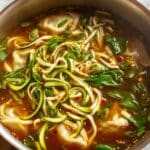
Gyoza Soup (Japanese Dumpling Soup) Recipe
- Prep Time: 3 minutes
- Cook Time: 7 minutes
- Total Time: 10 minutes
- Yield: 2 servings
- Category: Soup
- Method: Stovetop
- Cuisine: Japanese
- Diet: Vegetarian
Description
A comforting and flavorful Japanese Gyoza Soup featuring crispy vegetable gyozas simmered in a savory broth with fresh spring onions, pak choi, spiralized courgette, and a ginger-garlic base. This quick and easy 10-minute recipe is perfect for a cozy meal packed with vibrant vegetables and warming spices.
Ingredients
Main Ingredients
- 5 vegetable gyozas (£3.50 for 20)
- 2 spring onions, thinly sliced (£0.40)
- ½ – 1 bulb pack choi, sliced into chunks (£1.00)
- 20 g ginger, finely grated (£0.50)
- 1 clove garlic, minced (£0.23)
- ½ courgette, spiralised (£1.00)
Cupboard Essentials
- 500 ml vegetable stock
- 1 tbsp soy sauce
- 1 tbsp chilli oil
- Salt & pepper to taste
Instructions
- Heat chilli oil and spring onion: In a medium-sized saucepan, add the chilli oil and heat over low heat. Add half of the thinly sliced spring onion (the whiter part) and season lightly with salt. Fry gently for about 2 minutes to release the flavors.
- Sauté garlic and ginger: Add the minced garlic and finely grated ginger to the saucepan. Fry together for about 1 minute, stirring constantly to prevent burning and let the aromas develop.
- Add remaining ingredients: Add all the remaining ingredients to the pan including the vegetable gyozas, sliced pak choi, spiralized courgette, vegetable stock, and soy sauce. Stir everything well to combine the flavors evenly.
- Simmer the soup: Place a lid on the saucepan and let the soup simmer gently for around 7 minutes. This allows the gyozas to cook through and the vegetables to soften while the broth absorbs all the seasonings.
- Serve: Once cooked, ladle the soup into bowls and garnish with the reserved spring onion slices and a sprinkle of chilli flakes for added heat. Serve immediately and enjoy your warm, comforting gyoza soup.
Notes
- Use vegetable gyozas to keep the recipe vegetarian.
- You can adjust the amount of chilli oil for milder or spicier flavor.
- If you like a thicker broth, add a cornstarch slurry during the last minute of simmering.
- Feel free to substitute pak choi with other leafy greens like spinach or bok choy.
- This soup is best served fresh but can be refrigerated for up to 2 days.
Nutrition
- Serving Size: 1 bowl (approximately 350 ml)
- Calories: 210 kcal
- Sugar: 4 g
- Sodium: 700 mg
- Fat: 8 g
- Saturated Fat: 1 g
- Unsaturated Fat: 6 g
- Trans Fat: 0 g
- Carbohydrates: 28 g
- Fiber: 4 g
- Protein: 6 g
- Cholesterol: 0 mg

